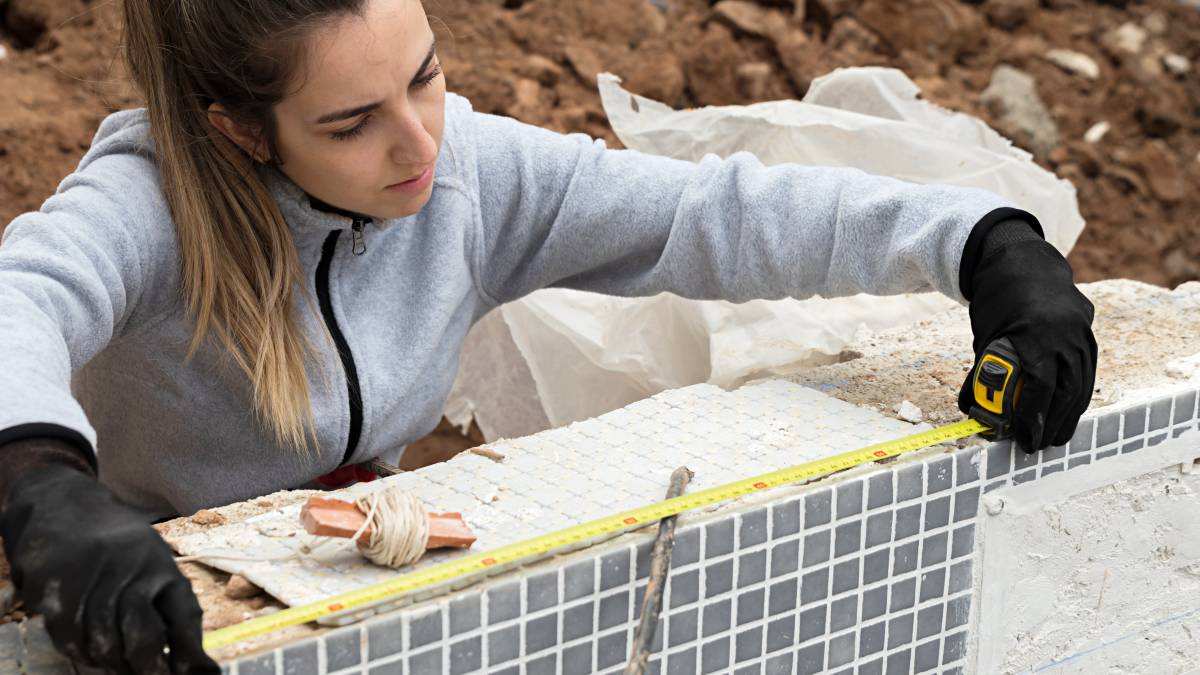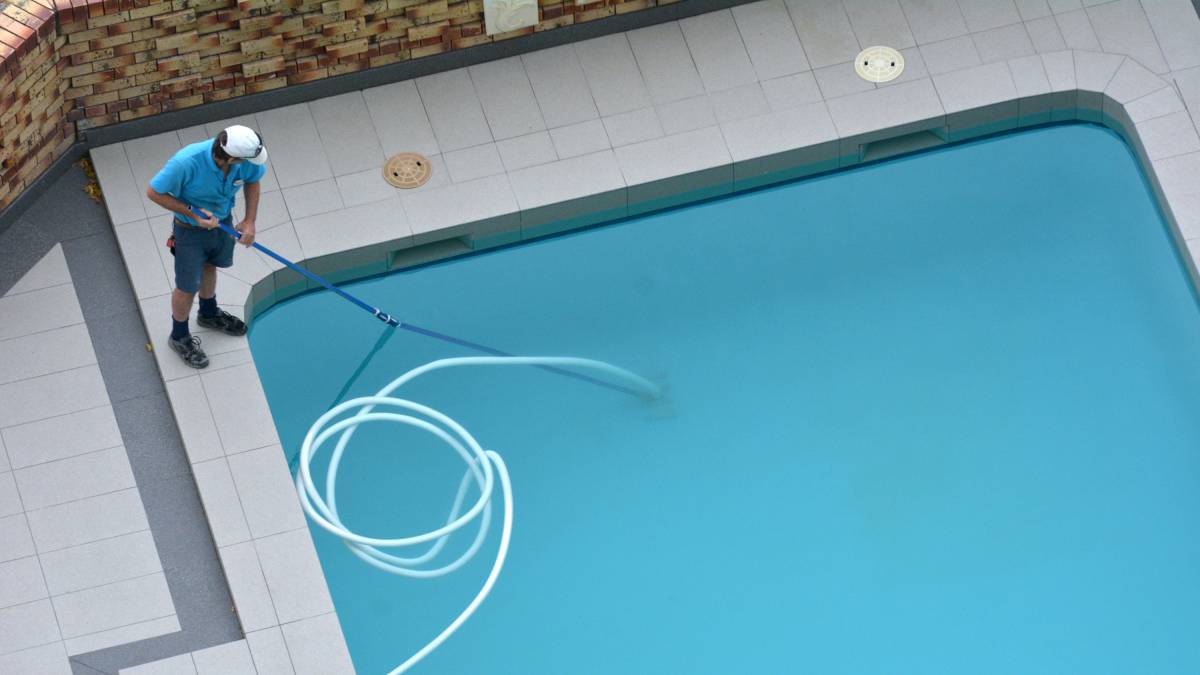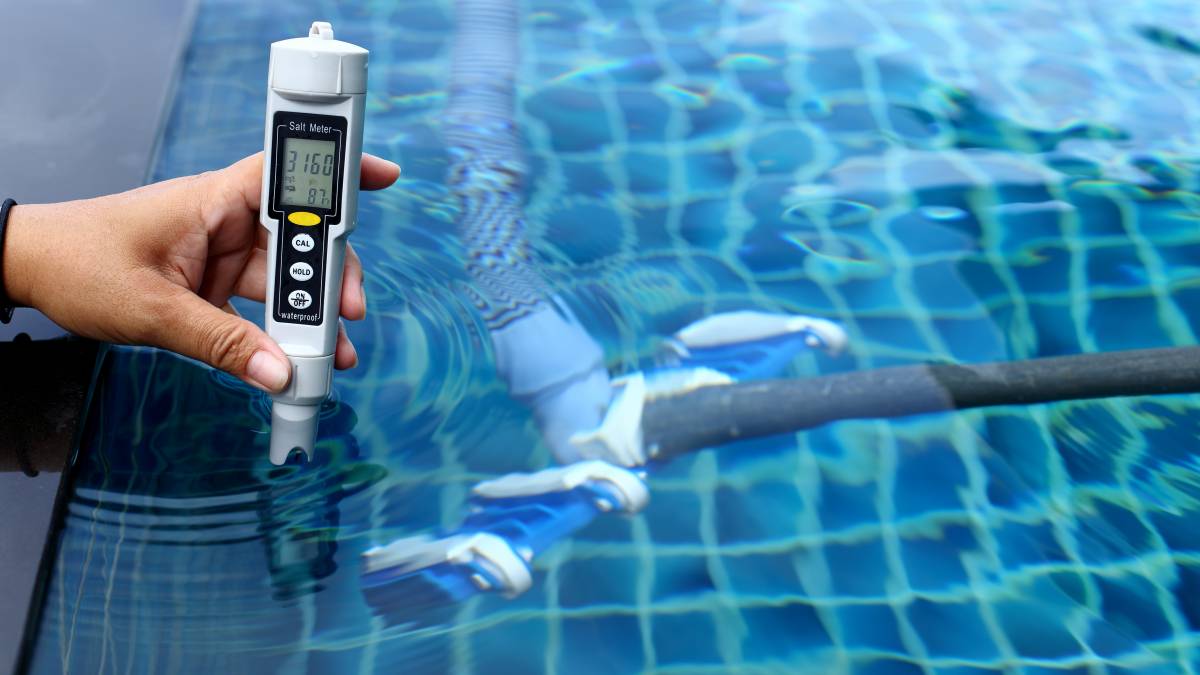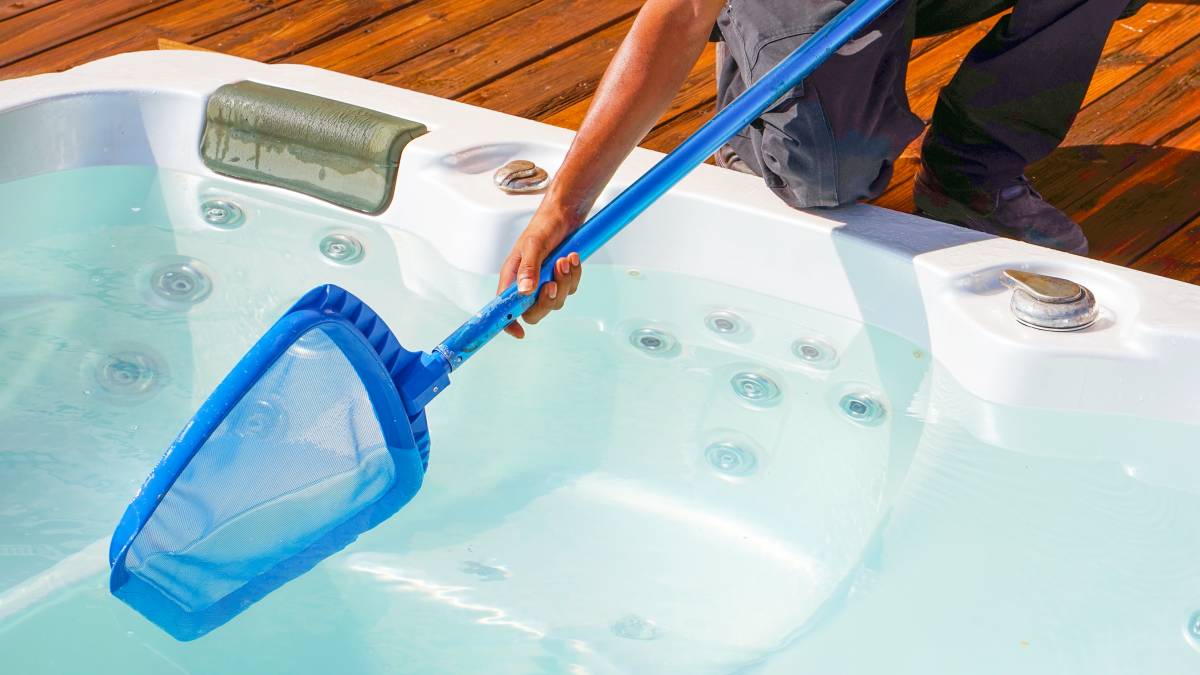- Home/
- Guides/
- Pool Cleaning/
- How to Clean a Dirty Pool
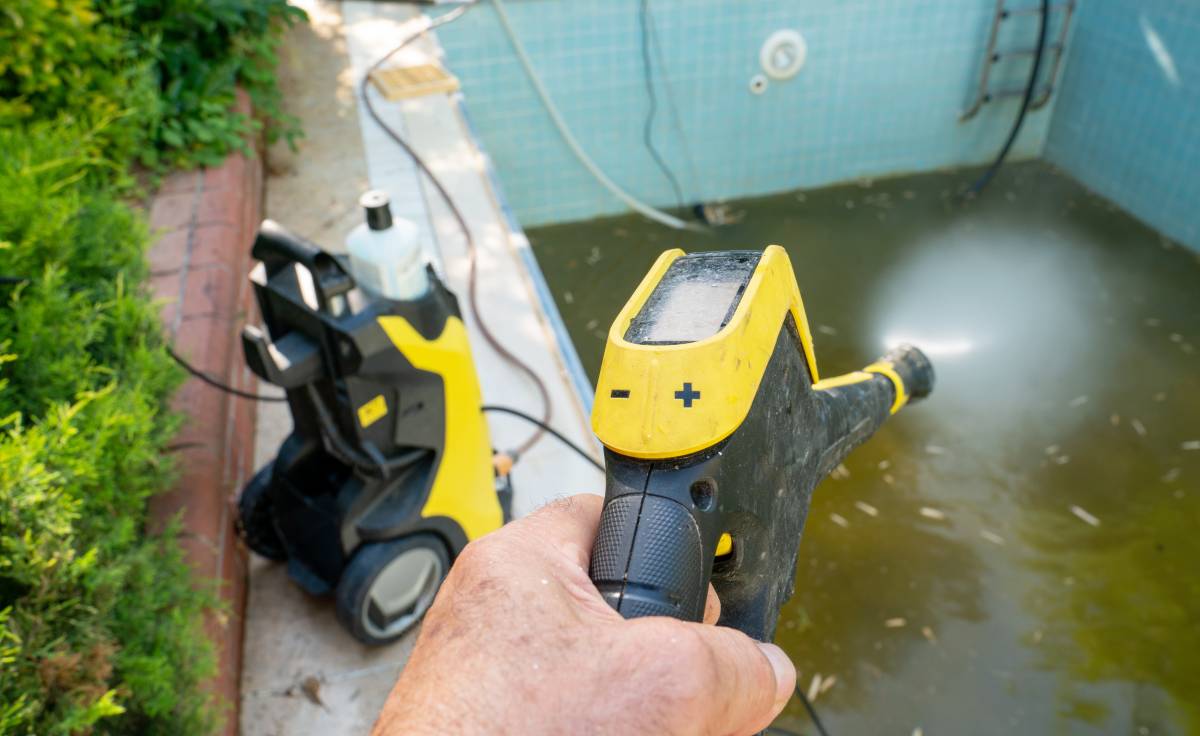
How to clean a dirty pool
Should you drain water from your pool after heavy rains and flooding? Here’s everything you need to know about cleaning a dirty pool.
Find a pool cleaning serviceLast Updated on
Should you drain water from your pool after heavy rains and flooding? This may be your first instinct, but you should actually not drain a pool flooded with stormwater. A sudden change in hydrostatic pressure can make your pool bow, bend, or pop out of the ground!
Instead, leave the pool as full as possible and wait for the surrounding water to recede to the same level as the pool. You can also take this time to clear as much debris as possible and sanitise your pool with chlorine and hydrochloric acid.
This guide takes you through everything you need to know about cleaning a dirty pool.
Note: Floodwater can be full of contaminants, so avoid entering the pool or touching the water to prevent eye and ear infections. |
How to clean dirty pool water
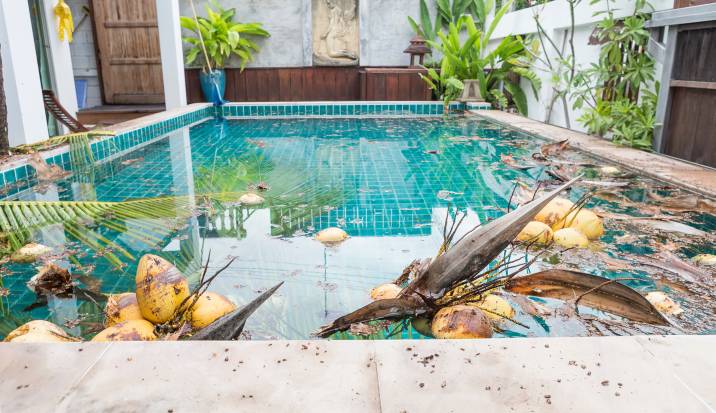
Pool debris includes residue, dead insects, leaves, and dirt. These particles can damage your pool. Not getting rid of the dirt can also cause your pool pump and machinery to malfunction, especially if debris gets caught in the filters.
You can clean a dirty pool with a pool net, pool vacuum, or filtration system. But do note that a pool filter won’t work in a flooded pool; Fine silt particles are too small and will recirculate back into the pool.
Step 1: Scoop out debris with a pool net
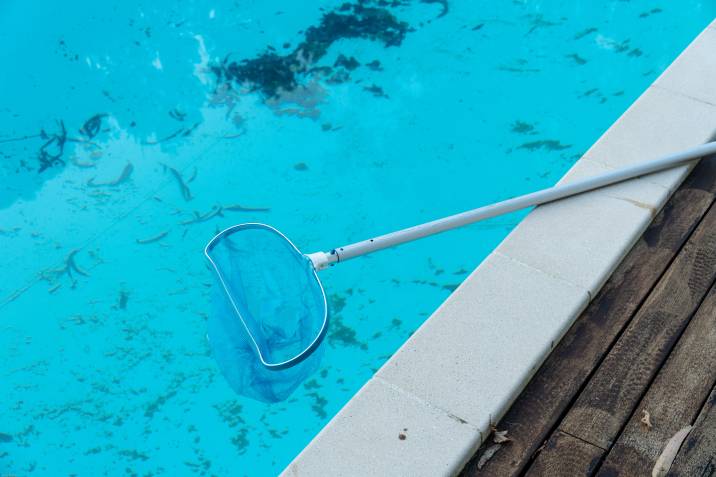
Use a net to scoop out the debris. You can use a long pool net to minimise movement while sweeping through your entire pool.
Step 2: Remove debris with a pool vacuum
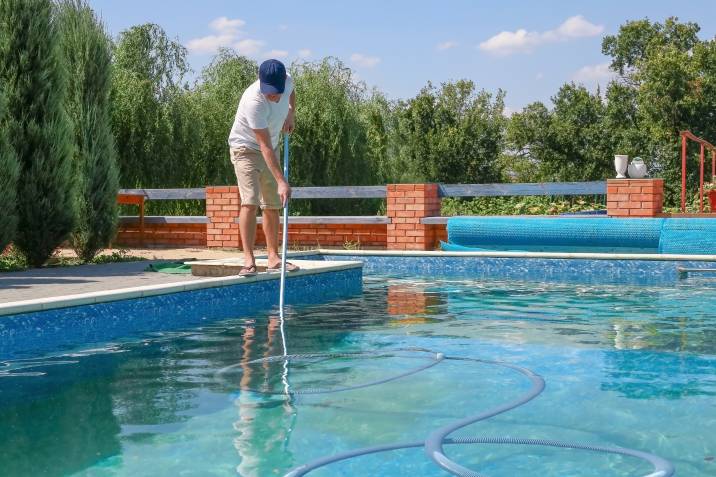
If you want a quicker, more precise way of getting the debris out, you can use a pool vacuum. Before using this equipment, make sure to allow the debris to settle to the bottom of the pool.
Step 3: Clean your dirty pool
Use a tile brush to scrub dirty pool walls and floor. While scrubbing a drained pool is ideal, you can also do this task with water still in the pool. Simply use a long pool brush to remove dirt and algae.
Household products like baking soda, bleach, and Borax can be useful in pool cleaning. However, the right cleaning product will vary depending on the type of pool you have (e.g., a chlorine-based pool or saltwater pool). Your safest option is to hire a professional cleaning service to avoid damaging your pool’s lining or plumbing.
If you have mud and muck, the best way to clean your pool is through a skimmer. It is usually a small- or medium-sized machinery built into your pool to suck out debris. Activate this equipment and watch the magic happen! You can also use a pool vacuum if you don’t have a skimmer on hand.
How to drain excess water from a pool
Once the surrounding area has thoroughly dried, you can do the following steps to drain your pool.
Step 1: Unplug your pool pump
Before you begin, make sure to unplug your pool pump to prevent electrical components from turning on while you clean. This is also the time to attach your hose and prepare it for draining. There should be enough distance between your pool and the submersible pump where you connect your hose.
Step 2: Lower your hose into the pool and run your pump
Bring your hose down into the pool and turn on your pump. Make sure that your pump is plugged into the GFCI (Ground Floor Circuit Interrupter) outlet so that you do not experience any short-circuiting.
Step 3: Wait for the water to drain
Once the pump and the hose are running, you can leave your pool to drain but check on it from time to time. You’ll need to constantly check on your pool to ensure the pump doesn’t run dry and break down. A pool typically takes around 14 hours to fully drain. However, the draining time may vary depending on the size of your pool.
How to restore pH levels in your pool
Before turning your pool back on, turn off any power and get your pool checked and tested. Flooding or rain can disrupt the pH level of your pool. The perfect pH level of a pool is between 7 to 7.6. Anything below that can sting your eyes, and anything above that can cause skin rashes.
Add chlorine tablets
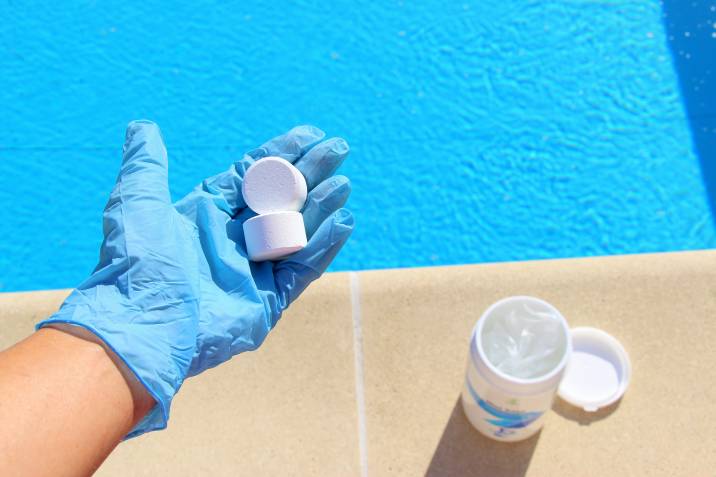
Chemicals like chlorine can fight off germs and maintain a pool’s pH level. Other acids can also help raise or lower pH levels.
You can use a pH metre to check if the pH levels in your pool have changed, or you can have a pool specialist do the pH reading for you. Our pool cleaning cost guide can take you through typical service rates so you know what to expect.

Alternatively, you can use a pH strip.
Dip the strip (similar to a litmus test) into the pool. The resulting colour will tell you the estimated pH level. You can refer to the pH colour chart to see whether your pool is at the ideal pH level.
Depending on the result, you can either pour an acid (usually sodium bisulfate) or alkaline (usually sodium bicarbonate) to lower or raise your pool’s pH level.
The benefits of hiring a pool cleaning service
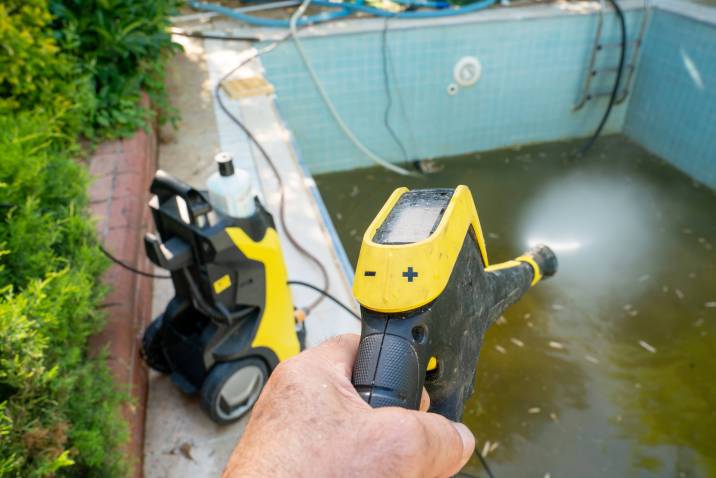
Cleaning a dirty or flooded pool can be a complicated process. The proper method and cleaning materials may vary depending on the type of pool you have. A professional pool cleaner can save you all the guesswork and effort. This way, you can avoid causing further damage to your pool and exposing yourself to harmful contaminants.
| Hire a pool cleaning service now > |
Related articles

How to clean a dirty pool
Read more

How to keep your hot tub clean
Read more
Related price guides
